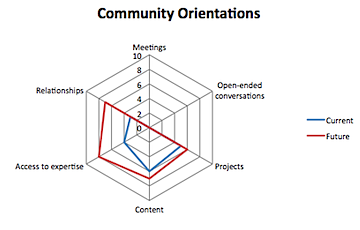Rob Cottingham is always coming up with cool new stuff. He is the first person I knew to create cartoons about social media. He was one of the first people I graphically recorded “up front” (instead of from the back) at NorthernVoice a few years back (sadly, the video is now gone but you can see the images here). So when he invited me to be his first guest on the Social Speech Podcast, I had to say yes. Here are the deets:
The social web has gone a long way toward changing what it means to be in the audience at a speech – making an audience member less a passive spectator listening to a monologue, and more an active participant in a conversation among peers.
And nobody does that quite like Nancy White – except she doesn’t just rely on digital technology. She’s one of the best group facilitators in the business, working all over the world with everyone from small community groups to Fortune 500 companies. You can see her approach at work in the March of Dimes’ Share Your Story site, which several years on is still one of the examples we cite the most often of how online community can make a real different in people’s lives.
So who better to kick off Episode 1 of the Social Speech podcast? (Graphic: A quick sketch I (Rob) did of Nancy at Northern Voice a few years ago.)
Thanks, Rob!
 I need your help and recommendations!
I need your help and recommendations! participants of the workshop to plot on a radar chart, which I’d drawn on a whiteboard, where they thought the community was currently and then do this again for where they would like to see the community of 12 months time. It generated a terrific conversation and a feel of mutual purpose. Here is what the result looked like.
participants of the workshop to plot on a radar chart, which I’d drawn on a whiteboard, where they thought the community was currently and then do this again for where they would like to see the community of 12 months time. It generated a terrific conversation and a feel of mutual purpose. Here is what the result looked like.